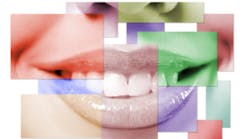How dental insurers can begin to pilot teledentistry
In a June 2018 whitepaper in Milliman, “Value proposition for teledentistry: Cost savings, improved services and more,” the authors concluded, “Telehealth and teledentistry in particular provide a value proposition for many stakeholders within the dental industry. Teledentistry can aid in reducing dental claims costs, provide opportunities to grow in individual practices, expand services to the underserved, and aid in the management of patients with chronic conditions.”(1)
In addition, as more focus and attention are given to the integration of medical and dental care, the article notes, “A teledentistry service may provide a cost-effective way to manage the oral health of patients who suffer with chronic conditions, with the potential to save on dental claims costs and even medical costs to the extent that better oral health can aid in managing a disease’s progression.”(1)
The Forbes article “Why some millennials aren’t smiling: Bad teeth hinder 28% in job search” states, “When asked why they don’t get dental care, cost is the first reason millennials cite, followed by inconvenient location or time.”(2) Cost is the biggest obstacle to affordable dental care at any age, but millennials appear to be the hardest hit. Money is especially tight for young adults who are struggling to find jobs, paying off student loans, or starting families.
The dental system is going to have to change in order to appeal to millennials, who are all about convenience. Millennials aren’t tied to the idea of a personal relationship with one dental practitioner; they are used to comparing services and costs and ordering on their smartphones, and they likely won’t tolerate inefficiency or long waits for appointments.
The question then becomes, why aren’t dental insurers embracing teledentistry?
Why haven’t dental payers embraced teledentistry?
I firmly believe that teledentistry has the potential to provide significant claims cost savings for dental plans, provide savings to our overall health-care system, improve access to care for many, and potentially act as the gateway to medical-dental integration.
The Milliman article references information provided by me that states, “Commercial dental plans typically provide coverage for two dental exams per year for their members. Clinically some members may not need two exams per year.”(1)
If you extend this example for the “very healthy oral population,” not only are you reducing the cost of the exam (i.e., teledentistry exam should be less than the cost of an in-office exam), but you’re eliminating the costs for such services as the prophy, x-rays (usually two to four bitewings), and other elective procedures that are often seen, such as replacement of amalgam fillings with composite fillings. These savings can be shifted to those with greater need or recognized as utilization savings and reflected in reduced rates.
However, there are others in the industry who aren’t quite as certain about the savings. The question I hear from them is, “Will there be enough adoption of the technology by members, and enough cost avoidance on certain services, to pay for this new service? Will it offer services that certain segments of the population who we’re now serving will need?”
Although my answer has been an emphatic, “Yes, you will see savings,” I also tell them the answer will be found in the data. The only way to get that data is to run a teledentistry pilot program.
Where to start—pilot programs
I believe there are three core factors involved in deciding which pilot model is best for your organization. The models are not mutually exclusive, so multiple pilot populations can be selected to meet multiple objectives:
1. Determining pilot focus—What is the focus of the pilot? Are you doing this to support a community mission, i.e., improved access or improved oral health; for claims cost reduction, i.e., reducing the average claims cost per member; or a combination of both? I recommend clearly defining up-front the results you hope to achieve.
2. The need for scale and duration—Based on the demographics of the population you pilot with, I estimate that you will see teledentistry use in the range of 5%–15% of the population. To gather meaningful data that will allow you to determine whether this should be permanently added to the benefit program, the pilot population needs to be large enough for this to occur. I recommend a minimum of 50,000 members.
In addition, a pilot period of four to six months gets most members through the normal recall cycle and should provide you with the data you need to make a teledentistry strategy decision. This time period can be shortened by ramping up communications to the pilot community in an effort to promote utilization.
3. Geography—You need to determine whether you want to limit this to members residing in and receiving care in one state, which will make communication and administration easier, or across multiple states if your plans cover members in other states. I feel a broader reach provides more representative results for your business.
Sample teledentistry pilot models
Here are a few options for pilots. Again, these are not necessarily mutually exclusive.
1. Member engagement pilots
a. No-visit population—Pilot with members who have not visited the dentist during the past 12-plus months.
b. Limited access patients—Pilot with members who live in rural and other known “access issue” locations.
2. Cost-impact pilots
a. Healthy population—Pilot with members who have consistently exhibited good oral health behavior to determine whether claims costs can be positively impacted.
b. Demographically diverse population—Pilot with members across various demographic factors, such as age and location, to determine differences in adoption and utilization.
3. Client-segment impact
a. Client-specific—Pilot only with a select few large clients who would be willing to offer this benefit to all of their members.
b. Market segment—Pilot with certain business industries and segments that historically tend to have higher use profiles than other segments.
Adding a new benefit to a dental benefits program is hard to do as utilization patterns are unknown, which generates concerns about loss ratios. However, all we need to do is look at successes in telehealth and telemedicine to know that consumers are embracing such services and claims savings are achievable.
In order to mitigate the uncertainties and provide reassurance about the benefits of teledentistry, conducting a well-thought-out and crafted pilot should provide the answers you need to move forward. Let BD Silverman Consulting help you get the answers you need.
References
1. Fontana J, Wix D. Value proposition for teledentistry: Cost savings, improved services and more. Milliman website. http://www.milliman.com/insight/2018/Value-proposition-of-teledentistry-Cost-savings--improved-services--and-more/. Published July 5, 2018.
2. Hembree D. Why some millennials aren’t smiling: Bad teeth hinder 28% in job search. Forbes website. https://www.forbes.com/sites/dianahembree/2017/03/28/why-some-millennials-arent-smiling-bad-teeth-hinder-28-in-job-search/#6d0998c659c6. Published March 28, 2017.


